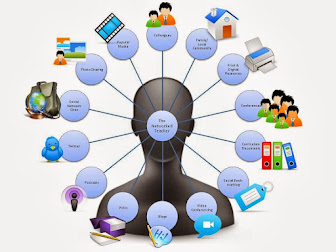Technology is a valuable tool that is undeniably impacting today’s learners, especially in the world of COVID-19. Even before the pandemic, the benefits of technology usage in the classroom were visible and notable. With the growing reliance on technology in almost every aspect of our lives, including our ability to teach, many educators’ eyes have been opened to the benefits of technology and just how transforming it can be in our classrooms. Let’s face it: without technology, our students would not be learning today. If you think about the environments our students are currently receiving instruction--some brick and mortar meaning they physically report to school each day, some participating in a hybrid style of learning meaning they participate in virtual learning as well as face-to-face and instruction, while others are fully remote and are solely taught in a virtual setting. Technology is a key instructional tool for each of these learning environments. So, why wouldn’t we fully embrace the role technology can play in enriching our students’ learning experiences and reaching them wherever they are (literally)?
With that being said, it's safe to say we can agree that handing students a device is NOT the sole answer for improving their education. I think we can also agree that implementing technology is no easy task. It takes a lot of learning-- first by the teacher then by the students, reflecting, critiquing, and troubleshooting. However, it can and should be done! But not without first teaching students HOW to appropriately and responsibly utilize these tools. Implementing technology is a step in improving their educational experiences, but certainly not the only way. Providing our students with opportunities to interact and collaborate with one another outside of a screen is equally important. Our students need to engage in activities that also promote hands on critical thinking skills and team-working skills that may or may not be attainable through the use of technology. There is always a time and a place for tech and it is our job as educators to find media balance and be cognizant of how and when we are using technology in our classrooms. It is also our jobs to ensure that our students are taught the digital citizenship skills necessary to become responsible and productive citizens in an ever-changing digital world.
In regards to the driving force behind the resistance or acceptance of technology, I personally believe that one may be hesitant or fearful of change and there’s no denying that implementing technology involves a great deal of risk-taking and making changes to what we have grown to know as our “way” of doing things. Let’s be honest; until you are forced to change (unless you have already made a voluntary commitment), it is easy to just do as you’ve always done because it works and why change something that isn’t broken?







